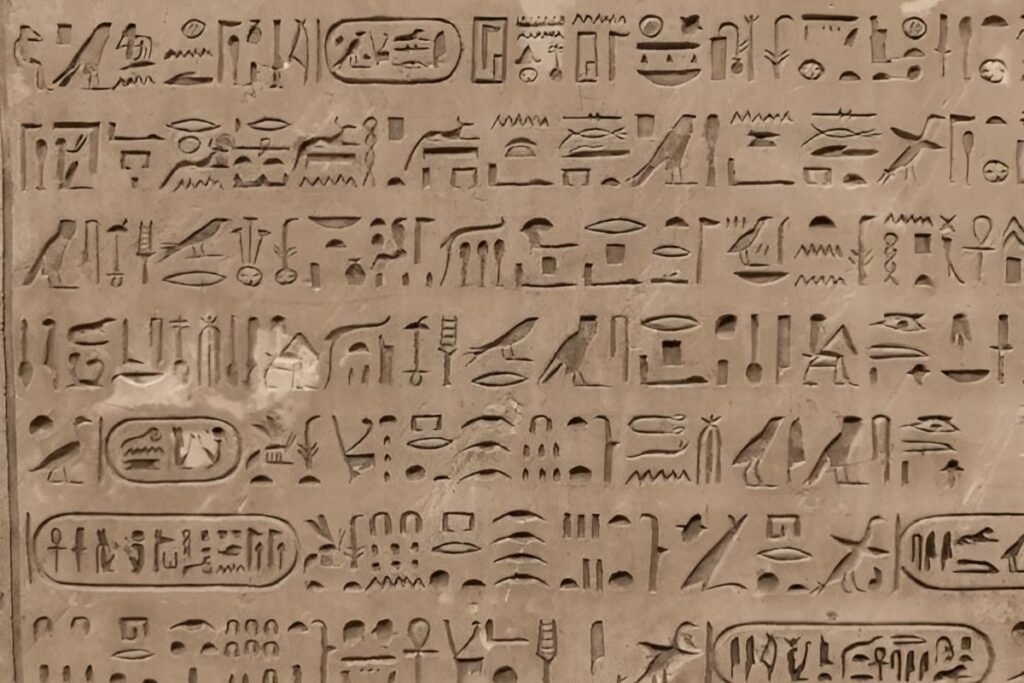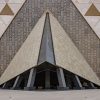Introduction – When Pictures Began to Speak
Understanding Egyptian Hieroglyphs: The first time I ducked into a rock-cut tomb at Saqqara, my guide’s flashlight skimmed a wall and—bam—an owl, a folded cloth, a loaf of bread, all painted the color of sun-dried turmeric. They looked like stickers from an ancient scrapbook, but my guide whispered, “That owl says m.” A consonant, not a bird. In that instant the scene flipped: what I’d taken for decorative doodles were actually syllables mid-conversation, like someone’s voice frozen in pigment.
Egypt’s hieroglyphs are often called “picture writing,” but think of them more as phonetic emojis—each sign able to shout a sound, hint a meaning, or simply set the mood. They’re the linguistic grandparents of every text bubble we tap today. To understand how humanity first convinced pictures to carry paragraphs, we have to rewind to a time before papyrus, before pyramids—even before kings wore crowns.
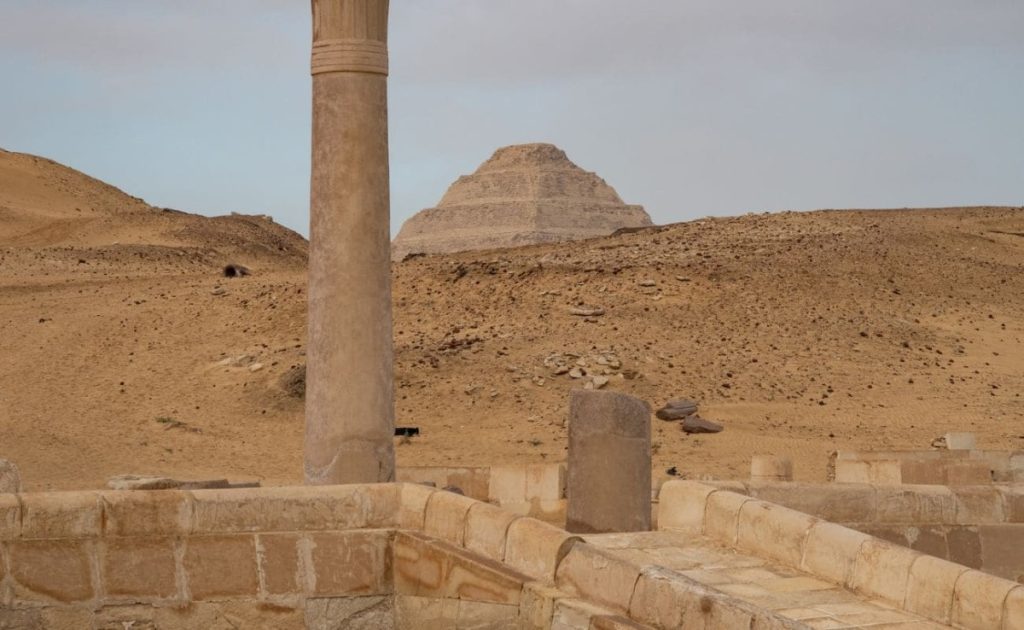
Genesis of the Glyphs – From Pot-Marks to Full Sentences
Imagine a bustling beer warehouse at Abydos circa 3,200 BCE. Clay jars line the floor, each stamped with quick marks: a fish here, a scorpion there, maybe a curvy ripple for the Nile. These were the “barcodes” of pre-dynastic Egypt, simple ownership symbols so shipments didn’t mix on their voyage downstream. But give a creative bureaucracy some pottery and ink, and symbols start multiplying like desert stars.
The Narmer Palette: Egypt’s First Comic Strip
I once pressed my nose against the glass case in Cairo’s museum, trying to read the Narmer Palette the way a kid tackles her first graphic novel. Here’s the king smiting enemies; there are the entwined long-necked beasts forming the makeup tray. Above, a tiny cow goddess peers over the action. Every figure is frozen mid-gesture, yet together they stitch a story: Upper and Lower Egypt unified under one crown. No alphabet, no vowels—just pure visual narrative carving state propaganda in slate.
Ivory Labels: Tweets on Toothpicks
Travel south to Abydos, and archaeologists have unearthed thumbnail-sized ivory tags once tied to royal linens or jars of perfume. On one, a falcon perches over a circular enclosure—most likely the name of King Den—while a sideways “mouth” symbol means “place.” It’s essentially a tweet: “Falcon-king owns this estate.” Scribal economy at its finest.
When Pictures Found Their Voice
Within a century, these labels evolve into full sentences etched on stone tombs. Why? Royal ego and religious obsession—kings wanted their deeds remembered and their souls guided. So new glyphs were minted for abstract ideas: life, dominion, eternity. Determinatives—a slash of clarity at the word’s end—worked like modern hashtags to cue meaning: #city, #person, #divine. By the dawn of Dynasty III, walls of Djoser’s Step Pyramid complex read like limestone newsfeeds, chronicling offerings, festivals, even Nile flood levels.
Standing There Today
At Saqqara’s Imhotep Museum, a low-lit gallery displays those early tags beside later, sentence-long reliefs. Walk the line and you witness language elongating in real time—pot-marks blossoming into prose. It’s the linguistic equivalent of hearing a toddler’s babble stretch into its first, proud declaration: “I am here.”
How Hieroglyphs “Think” – Three Brains in One Script
A few years back I joined an epigraphy field school in Luxor. Every evening we’d huddle over fresh wall tracings, red-penciling tiny owls, water jars, and coiled ropes until our necks felt permanently bent like papyrus reeds. One night our instructor, Salma, challenged us: “Translate this single sign.” She chalked an owl on the board. We offered guesses—bird, night, wisdom. Salma shook her head. “Tonight it’s just the /m/ sound. Tomorrow it might be none of those things. Hieroglyphs wear masks.”
That’s the genius of the script: it runs on three simultaneous engines—phonetic, semantic, and atmospheric.
1. The Phonetic Engine – Owls That Say “M”
Roughly two-thirds of hieroglyphs act like alphabetic letters or syllables. An owl isn’t hooting; it’s politely mumbling /m/. A reed leaf whispers /i/. Combine them and you’re halfway to the name “Imhotep.” This was revolutionary: pictures stopped being mere illustrations and started carrying spoken sound, stitching oral language to permanent stone.
2. The Logogram Engine – When the Picture Is the Word
Some signs refuse to abandon their day jobs. A loaf of bread can literally mean “bread,” a seated pharaoh equals “king.” Think of these as power emojis—one image, whole concept delivered. They let scribes condense complex ideas, like sliding a graphic sticker into a text thread to save thumb-taps.
3. The Determinative Engine – Silent Stage Directions
Finally, there’s the whisper layer: symbols tacked to a word’s end that aren’t pronounced at all. A papyrus roll after a string of glyphs tells you, “Hey, this cluster is a document.” A little man with a hand to mouth signals speech or thought. Determinatives work like spoiler-free subtitles, steering meaning, clarifying puns, preventing catastrophic misunderstandings in tax records—and they’re the ancestor of our modern hashtags.
Reading a Royal Name in Real Time
Stand before any temple wall and look for an oval rope—a cartouche. Inside, signs dance between sound, sense, and silent clues. Let’s decode one together:
- Sun disk – the god Ra (also the syllable “ra”).
- Scarabeus beetle – Kheper, “to become.”
- Sedge plant + bee – the title “King of Upper and Lower Egypt.”
String them: Ra-kheperu-Ra, better known as Ramesses. In a dozen carved millimeters, the king claims divine light (Ra), endless rebirth (scarab), and dual sovereignty (sedge-bee). It’s Twitter brevity with mythic punch.
A Moment in the Field
At Deir el-Medina, I once copied a workman’s ostracon where a stick-figure man waves beside a beer jug. Phonetic strokes spelled weshem, “to celebrate,” and the determinative—arms raised in joy—sealed the vibe. Suddenly the shard felt less like dusty debris and more like an RSVP scribbled by a tomb painter inviting friends to knock-off drinks. The past laughed across 3,200 years, and I laughed back.
Hieroglyphs, then, aren’t frozen art; they’re a triple-coded conversation, alive as any group chat—only the participants happen to be long-gone scribes, priests, and kings.

Hieratic & Demotic — Egypt’s “Cursive” Scripts for Priests, Poets, and Paper-Pushers
I was once handed a fresh sheet of papyrus in a Luxor conservation lab and invited to try writing in hieratic. The curator dipped a reed pen into soot-black ink, then urged: “Don’t draw—flow.” My first stroke wobbled like a startled eel; hers skimmed the surface in a fluid, ribbon-thin line. In seconds she dashed off a hymn to Amun that would have taken half an hour in formal hieroglyphs. That, in a nutshell, is why hieratic was born: bureaucracy waits for no Pharaoh.
Hieratic — Sacred Texts on Fast-Forward
- Temple Ledger to Love Letter: Beginning around 2600 BCE, scribes simplified hieroglyphic pictures into swift brush loops. Temple accounts, medical treatises, even ghost stories such as The Tale of the Shipwrecked Sailor poured from reed pens faster than chisels could ever scratch stone.
- Ink Ballet: Written right-to-left, hieratic lines dance with swooping ligatures; watch a scribe’s wrist and you’ll see calligraphy that feels almost musical, a silent flute solo across papyrus.
- Portable Wisdom: Because ink weighed less than stone, knowledge could travel—rolled, tucked into leather pouches, ferried from library to field camp. The same priest who recited funeral rites in a Theban crypt might copy a math exercise for a student by moonlight.
Demotic — When Everyday Egypt Grabbed the Pen
Fast-forward to about 650 BCE: Egypt faces new rulers, new markets, and a paperwork explosion. Enter Demotic, a script that looks like shorthand hieratic writ even speedier, its curves compressed into jagged strokes—urban graffiti compared to hieratic’s monastery script.
- The People’s Scribble: Demotic scrawls across tax receipts, debt contracts, and cheeky love spells. One ostracon from Elephantine pleads, “Don’t drink too much beer and forget me,” proof that heartbreak predates Wi-Fi.
- Rooftop Graffiti: Climb to Philae Temple’s highest rooms and you’ll spot Demotic names carved beside Greek ones—ancient backpackers tagging “I was here” above the Nile.
Script of Revolt and Reform: Demotic petitions record labor strikes at Deir el-Medina, farmers suing corrupt officials, even women claiming inheritance rights—voices otherwise lost in royal stone narratives.
A Living Continuum
Think of hieroglyphs, hieratic, and demotic as three camera modes on the same phone:
- Portrait (Hieroglyphs): High-resolution, ceremonial, carved for eternity.
- Video (Hieratic): Fluid, continuous, perfect for storytelling and ritual.
- Snapshot (Demotic): Quick, candid, capturing daily life in the blink of an ink-dot.
Each mode served its moment, yet all shared the same linguistic DNA. A single scribe could switch among them like a polyglot texter jumping from formal email to casual DM.
Why It Still Resonates
When we jot a grocery list or fire off a tweet, we’re reenacting an ancient compromise: balancing speed with clarity, function with flair. Hieratic and demotic prove that even in antiquity, the human urge to write it down now—before the thought evaporates—was as urgent as any royal decree.
So next time you stand in a museum pondering a papyrus smudged by a hurried hand, remember: you’re staring at Egypt’s analogue answer to fast typing, the caffeinated cursive that kept pyramids provisioned, lovers connected, and history humming in real time.
Discover the hidden treasures of Siwa Oasis on this immersive 4-Day Cultural and Adventure Escape, blending rich cultural history, relaxation, and thrilling desert adventures. Explore the ancient ruins of the Shali Fortress, the Oracle Temple, and the Mountain of the Dead as you delve into Siwa’s historical significance. Unwind in the therapeutic waters of the salt lakes and Cleopatra’s Spring, and take part in traditional Siwan handicraft workshops.
For those seeking adventure, experience the excitement of a VIP safari in the Great Sand Sea, where you’ll sandboard down dunes, visit natural springs, and witness a breathtaking desert sunset followed by a cozy fire session under the stars. End each evening with an authentic cultural experience, including local Amazigh songs under the night sky, bringing you closer to the heart of Siwan heritage.
This carefully curated journey offers the perfect balance of relaxation, cultural immersion, and adventure, ensuring a truly unforgettable experience in one of Egypt’s most serene and remote destinations.
Pens, Palettes & Papyrus — The Nile’s Ancient “App Store”
I once spent an afternoon with a master calligrapher in Cairo’s bustling Khan el-Khalili market. Between sips of cardamom coffee, he handed me a reed cut at a sharp 45-degree angle—light as a birds’ feather yet sturdy as a tent peg. “This,” he said, tapping the nib against his thumb, “is the USB cable to the gods.” One dip into a cake of soot-black ink and the pen skated across papyrus, leaving a glistening trail that dried to velvet. In that instant I understood: before keyboards and touchscreens, Egypt’s scribes had already perfected an elegant hardware-software combo that powered an entire civilization.
The Papyrus Production Line — River, Knife, and Sun
- Harvest: Workers sliced the marshy Nile stems at dawn when sugar levels peaked, ensuring the inner pith stayed pliable.
- Layer & Press: Strips were laid crosswise, then pressed under stone blocks; natural starches fused them into a single sheet tougher than modern printer paper and flexible enough to roll like a yoga mat.
- Sun Cure: Sheets baked under Egyptian heat until they blushed honey-gold, emitting a faint, sweet aroma—think fresh-cut hay mixed with river mist.
I once unrolled a 2,000-year-old fragment at a conservation lab: the fibers still hummed with river memory, as if storing whispers from every flood the Nile ever knew.
Ink Cakes — Alchemy in Black and Red
- Recipe: Soot from oil lamps, gum arabic as binder, a dash of water. For red ink—critical for headings and divine names—scribes swapped soot for ochre ground on a palette’s shallow hollow.
- Function: Black for narrative backbone; red for chapter titles, corrections, or to shout “Pay attention!” (The earliest form of boldface.)
- Scribe Hack: Ink was dried into cakes the size of coin piles. Add a droplet of water with your brush tip, and you had fresh, smudge-resistant pigment anywhere—temple porch or desert dig house.
The Reed Pen — A Stylus That Could Sing
- Craft: Cut from Juncus maritimus reeds, beveled nibs delivered line-weight flair with each wrist flick—thick down-strokes, hairline up-strokes, much like modern calligraphy brushes.
- Maintenance: Scribes kept a tiny whetstone on their palettes, reshaping nibs the way chefs hone knives between chops.
Soundtrack: Dip, flick, scratch—listen closely in a quiet gallery and you can almost hear that rhythm echoing off papyrus displays.

Ostraca — Ancient Post-It Notes
When papyrus proved too pricey or fragile for drafts, artisans grabbed limestone flakes or broken amphora sherds—ostraca—and scribbled shopping lists, bawdy jokes, even first drafts of epic poems. At Luxor’s open-air museum, I held one no bigger than a phone screen; on its pale surface, a scribble of hieratic marked wine rations for a tomb-builder crew. It felt like scrolling someone else’s grocery app from 1200 BCE.
Portable Desks & Nomadic Knowledge
Scribes slipped wooden palettes—grooved for reed pens and twin ink wells—into leather satchels. With papyrus rolls tucked underarm, they could set up shop anywhere: palace archive, desert expedition, or shady courtyard where villagers awaited contracts. Picture a freelancer with a laptop bag, minus the Wi-Fi but plus the authority of divine script.
Scribe Life – Power, Paychecks & Papyrus Perks
On a blistering summer dig at Deir el-Medina—the village where the artisans of the Valley of the Kings once bunked—I helped catalog household ostraca. One sherd listed a worker’s beer ration, another tallied absences for “scorpion sting,” and a third recorded a scribe’s fine quill doodle of a pharaoh smacking a lazy foreman. My Egyptology professor laughed: “That’s the real juice—scribes always had the best gossip.”
The Elite with Ink-Stained Fingers
- Gatekeepers of Knowledge – In a society where perhaps one in fifty people could read, scribes functioned like combined accountants, lawyers, and IT admins. If a farmer needed a land deed or a general wanted supply tallies, a scribe’s brush sealed the deal—no scribal stamp, no legitimacy.
- Comforts beyond the Quarry – While masons chiseled stone in searing sun, scribes often worked in shaded porticos, papyrus rolls spread on knee-high cedar stools. Pay came not only in grain rations but in status: spare time to compose poems, access to temple libraries, and freedom from the calloused hands of heavy labor.
Satire of the Trades – A famous Middle Kingdom papyrus has a teacher scoffing at carpenters, fishermen, and cowherds: “Be a scribe,” he urges, “for every other job smells of sweat or fish.” The text drips with smug humor—and maybe a hint of truth.
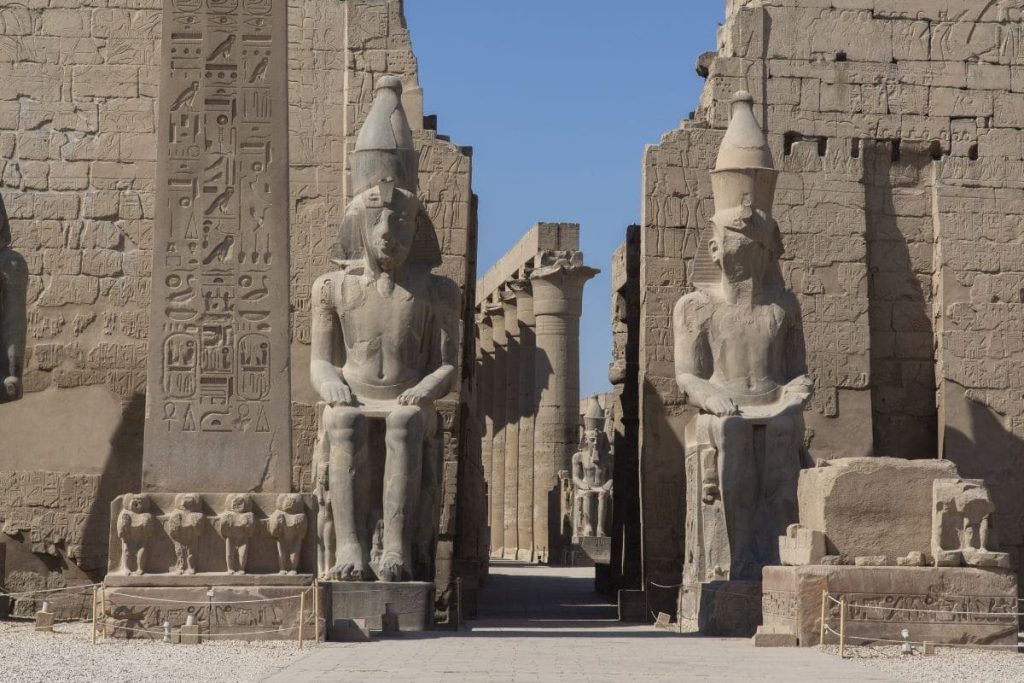
Ostraca — Ancient Post-It Notes
When papyrus proved too pricey or fragile for drafts, artisans grabbed limestone flakes or broken amphora sherds—ostraca—and scribbled shopping lists, bawdy jokes, even first drafts of epic poems. At Luxor’s open-air museum, I held one no bigger than a phone screen; on its pale surface, a scribble of hieratic marked wine rations for a tomb-builder crew. It felt like scrolling someone else’s grocery app from 1200 BCE.
Portable Desks & Nomadic Knowledge
Scribes slipped wooden palettes—grooved for reed pens and twin ink wells—into leather satchels. With papyrus rolls tucked underarm, they could set up shop anywhere: palace archive, desert expedition, or shady courtyard where villagers awaited contracts. Picture a freelancer with a laptop bag, minus the Wi-Fi but plus the authority of divine script.
Scribe Life – Power, Paychecks & Papyrus Perks
On a blistering summer dig at Deir el-Medina—the village where the artisans of the Valley of the Kings once bunked—I helped catalog household ostraca. One sherd listed a worker’s beer ration, another tallied absences for “scorpion sting,” and a third recorded a scribe’s fine quill doodle of a pharaoh smacking a lazy foreman. My Egyptology professor laughed: “That’s the real juice—scribes always had the best gossip.”
The Elite with Ink-Stained Fingers
- Gatekeepers of Knowledge – In a society where perhaps one in fifty people could read, scribes functioned like combined accountants, lawyers, and IT admins. If a farmer needed a land deed or a general wanted supply tallies, a scribe’s brush sealed the deal—no scribal stamp, no legitimacy.
- Comforts beyond the Quarry – While masons chiseled stone in searing sun, scribes often worked in shaded porticos, papyrus rolls spread on knee-high cedar stools. Pay came not only in grain rations but in status: spare time to compose poems, access to temple libraries, and freedom from the calloused hands of heavy labor.
Satire of the Trades – A famous Middle Kingdom papyrus has a teacher scoffing at carpenters, fishermen, and cowherds: “Be a scribe,” he urges, “for every other job smells of sweat or fish.” The text drips with smug humor—and maybe a hint of truth.
The Village Where Writers Moonlighted as Playwrights
At Deir el-Medina I traced ostraca sketched with bawdy skits: gods in slapstick quarrels, pharaohs portrayed as bumbling lovers. After long hours painting royal tombs, artisans and scribes staged these parodies for laughter by torchlight. Literacy didn’t just serve bureaucracy; it fueled Egypt’s first fringe theater scene.
Paperwork & Protest
Hieratic docket books reveal that when wages ran late, scribes drafted elegantly worded strike notices—the earliest recorded labor protests. One reads, “We are hungry; we have no clothing; our ink has dried.” It’s the timeless office e-mail, only hammered onto limestone for the foreman to deliver upriver.
Scribes at Court—Whispers in Royal Ears
A trusted chief scribe could annotate pharaonic decrees, tweak tax codes, even slip personal projects into the state budget. Some rose to vizier rank, steering politics from behind a palette. Think of them as ancient speechwriters and spin doctors, fluent in the grammar of power.
Ink as Passport
Because scribes recorded expedition inventories, many traveled farther than the soldiers they documented—quarries in Sinai, trading posts on the Levantine coast, Nubian gold mines. Each journey brought new words, new dialect notes, expanding the script’s palette like stamps in a well-worn passport.
Standing amid the broken pots and half-erased payrolls at Deir el-Medina, it’s clear: the pharaohs may have commanded armies, but the scribes commanded memory. Every chiselled decree, every ink-soaked ledger was a quiet assertion that those who control the pen shape what tomorrow remembers.
Sacred Speech vs. Everyday Chatter — When the Same Alphabet Served Both Gods and Grocers
I still remember kneeling inside Pharaoh Unas’ pyramid, my flashlight slicing through the narrow burial chamber. Turquoise-painted glyphs raced up the walls in tight, vertical streams—the Pyramid Texts, oldest spellbook on Earth. Each line read like a cosmic boarding pass: “Step over the horizon. Join the sun bark. Become a star.” The air felt charged, as if every painted owl and reed were still vibrating with whispered mantras from priests long gone.
A week later, back in Cairo’s Egyptian Museum, I leaned over a papyrus fragment only hand-span wide. It carried a Ramesside-era love poem—ink faded to cocoa brown:
“Your voice is goose down
plucked at dawn; my heart
flutters whenever you speak.”
Same script family, radically different vibe. The leap from tomb spells to pillow talk shows how hieroglyphic DNA threaded both the sublime and the mundane

Stone Sermons — Language Carved for Eternity
- Pyramid & Coffin Texts: Carved deep, painted bright, they coached royal souls through afterlife checkpoints, the way a modern traveler guards boarding passes and passwords.
- Temple Reliefs: Walls of Karnak thunder with cosmic math—pharaoh defeats chaos, offers maat (order), renews the sun each dawn. Every glyph is a megaphone announcing universal balance.
Iconoclasm & Restoration: Akhenaten’s zealots once chiseled out Amun’s name wherever they found it. Later rulers re-inked the god’s glyphs, proving political erasers never fully delete divine hashtags.
Inked Whispers — Scripts for Market and Hearth
- Household Ostraca: Grocery lists noting “2 measures of barley, 1 jar of beer.” The same determinative that crowns a deity marks a sack of grain—context decides reverence.
- Love & Snark: Papyrus letters tease friends, woo crushes, complain about hangovers. One Demotic missive from Elephantine scolds: “If you love me, send figs. If not, may Sobek nibble your toes.”
- Graffiti at Abu Simbel: Travelers scratched names and boat doodles beside colossal statues—proof that even in antiquity, tourists sought immortality in stone selfies.
A Single Script, Multiple Registers
Think of hieroglyphic-based writing as a radio with three channels:
- God Mode: Monumental, eternal, carved to outlast dynasties.
- Official Mode: Papyrus decrees, tax rolls, and courtroom transcripts—bureaucracy’s bloodstream.
Human Mode: Love notes, jokes, and to-do lists—ephemeral ink on ostraca, yet sometimes better at preserving heartbeat than granite ever could.
Field Notebook Moment
While recording quarry inscriptions in Aswan, I spotted a quick hieratic scrawl: “Hot today. Water low.” Just five words, a weary sigh across thirty-three centuries. It hit harder than any grand hymn—proof that scribes, like us, groused about the weather.
So the next time you tilt a headlamp across tomb walls or squint at a museum papyrus, remember: you’re tuning into a vast frequency band where the sacred back-announces the grocery run, where cosmic hymns share syntax with sweet nothings. One system, endless voices.
Breaking the Code – From a Cracked Black Stone to AI-Powered Papyrus
I can still feel the hush that settled over Room 4 in the British Museum the first time I stood before the Rosetta Stone. Tourists clustered three rows deep, phones aloft, yet the slab itself seemed deeply private—like an old librarian who happens to hold every secret in three languages. Its surface glitters with mica; the Greek text flows like neat, disciplined soldiers, the Demotic curls in quick shorthand, and the hieroglyphs crown the top in regal, pictorial rows. One stone, three scripts—that accidental trilingual “WhatsApp chat” would reboot our understanding of ancient Egypt.
The Soldier, the Scholars, and the “Eureka!” Telegram
- 1799, Rashid (Rosetta): A French artillery officer named Pierre Bouchard unearths the basalt fragment while fortifying Napoleon’s camp. He recognizes its potential immediately—rare humility for a man hauling cannons.
- Champollion vs. Young: For two decades, scholars duel with dictionaries and hunches. Thomas Young deciphers the cartouche of “Ptolemy,” but it’s Jean-François Champollion—polyglot prodigy and caffeine addict—who finally cracks the phonetic principle. Legend says he burst into his brother’s study, shouted “Je tiens l’affaire!” (“I’ve got it!”), then fainted dead away. If true, it’s history’s most dramatic mic-drop.
Why It Worked: The stone’s decree repeats a single message in hieroglyphic, Demotic, and Greek—like having a movie with subtitles and a script. Champollion mapped royal names letter by letter, proving that pictures could spell sounds, not just ideas.
Digital Decryption — Hieroglyphs Meet Machine Learning
Fast-forward two centuries: researchers feed thousands of high-resolution glyph images into AI models. Algorithms now suggest transliterations, flag damaged signs for restoration, and even color-reconstruct faded pigments. A project at the University of Chicago recently crowdsourced Demotic papyri; volunteers online helped transcribe tax receipts once tucked into Nile mud bricks. The scribe’s desk has officially gone cloud-based.
The Contested Trophy
- Custody Debate: Egypt has formally requested the Rosetta Stone’s return, arguing that its removal after the French surrender to Britain counts as colonial spoils. The museum counters with conservation records and public-access arguments. Wherever you stand, the stone’s future is a live diplomatic script still being written.
- The Rashid Replica: If you want context without the Heathrow layover, hop to the coastal town of Rashid. A faithful replica stands near the discovery site, surrounded by briny Nile Delta air that smells exactly as it did when Bouchard brushed sand from the original.
Why the Crack Matters More Than the Stone
The Rosetta Stone isn’t famous for what it says—a fairly dull tax-relief decree—but for how it says it. Its broken edge proved language is a bridge, not a wall. Today, any traveler can walk into a temple, find a cartouche, and sound out a royal name. That possibility—ordinary people pronouncing 4,000-year-old words—might be the greatest act of resurrection archaeology has ever pulled off.
So next time you scroll through a translation app, remember: the impulse behind it sprang from a chipped slab of igneous rock and one sleep-deprived linguist who refused to believe pictures couldn’t talk. The conversation that stone reopened is still going—line by digital line, pixel by pixel, voice by recovered voice.
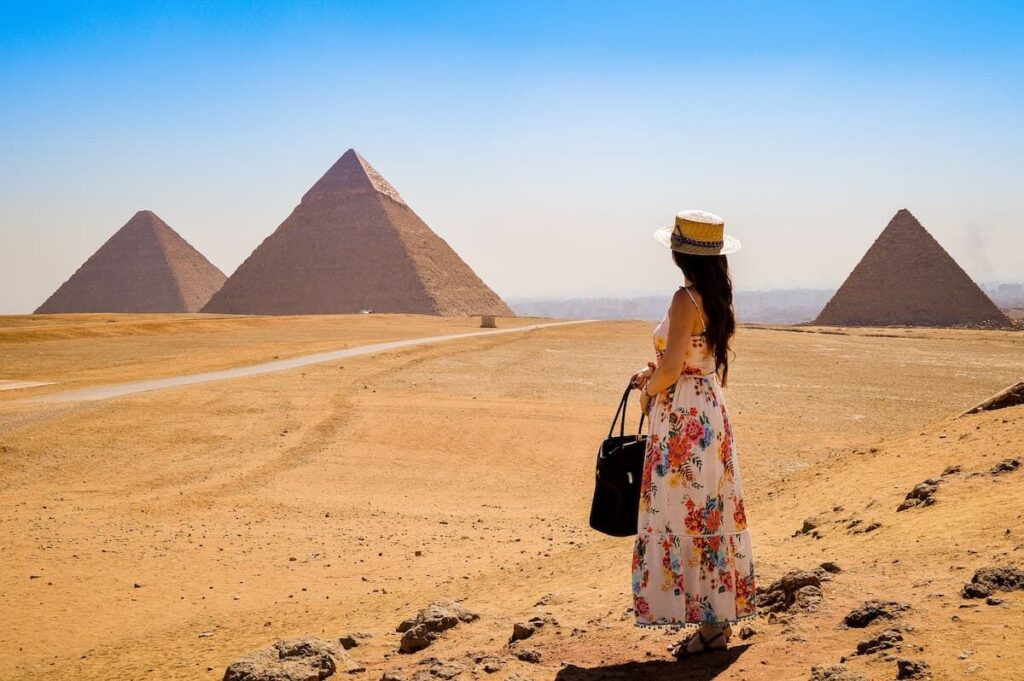
Reading Hieroglyphs on the Road — A Traveler’s Treasure Hunt
I once led a small group into Saqqara’s Unas pyramid just after closing time, our guide having charmed the guard with a shared cigarette and a story about his grandmother’s bread recipe. Inside, we switched off every flashlight. In that velvet dark a single phone beam grazed the turquoise glyphs. Gasps echoed as miniature owls, vipers, and ankhs sprang to life, like arcade neon suddenly powered on. That moment convinced even the most “not-into-history” traveler that hieroglyphs aren’t relics; they’re living LEDs scattered across Egypt, waiting for you to flick the switch.
Saqqara’s Whispering Walls
- Why Go: The Pyramid Texts here remain the earliest large-scale hieroglyphic literature on earth. Under a soft beam, blues and greens still glow like wet watercolor.
- Field Trick: Stand sideways to the wall so low-angled light skims the reliefs; shallow carvings pop into 3-D and you’ll spot tool marks—tiny signatures of craftsmen who haven’t had visitors for 4,000 years.
Luxor Temple After Dusk
- Magic Hour: Floodlights flip on and cartouches ignite like golden cufflinks on sandstone sleeves. Trace your finger above the reed leaf (i), folded cloth (s), and quail chick (w) and you’ve just spelled the throne name of Ramesses II.
- Memory Hack: Say the sounds aloud—i-s-w—and the phonetics anchor themselves faster than any flash-card.
The Avenue of Sphinxes — Hieroglyphs You Walk, Not Read
- Karnak to Luxor: Three kilometres of restored path where each pedestal bears a short inscription naming the reigning pharaoh. Read one aloud every fifty paces; by the end you’ll recite a royal lineage like a seasoned docent.
Philae’s Rooftop Graffiti
- Ancient Tagging: Scramble up (with a guide) to find late-period Demotic scribbles—essentially student doodles. They turn the sacred into the relatable: “Mekh, son of Pa-di-Hor, was here.”
- Interpretation Game: Spot the seated man determinative to know it’s a personal name; see the zig-zag for water and you’ll find Nile references everywhere.
Nubian Museum, Aswan — Hands-On Decoding
- Interactive Kiosks: Touchscreens let you drag a glyph into place and hear its sound bark from speakers—great for kids or adults who learn by ear.
- Souvenir Upgrade: Stamp your name in cartouche form on parchment; it beats a mass-produced snow globe and doubles as a cheat-sheet on the rest of your trip.
Pocket Tools for the Road
- Gardiner’s Sign-List App: Offline glossary; tap an owl, get the phonetic value /m/.
- Lined Notebook: Sketch unfamiliar glyphs on site; later compare with references. Drawing etches memory deeper than any photo.
Mini LED Torch: Museums dim lights to protect pigment; a pencil-thin beam (ask guards first) reveals colors your camera misses.
Moment to Savor
Sit on Luxor’s Corniche at sunset with a takeaway falafel. Across the river the Theban hills purple, and you know Hieroglyph E23 (the hill determinative) now by heart. That’s the real treasure of this hunt: each symbol unlocked adds a new layer to the landscape, turning scenery into subtitled cinema. Egypt stops being a silent epic and starts whispering lines you can actually repeat.
Conclusion – Turning Dead Stone into Living Ink
Step back and look at the journey we’ve traced: humble pot-marks on beer jars swelling into full grammars that could launch a pharaoh’s soul; reed pens and river-grown papyrus forming the first portable laptops; scribes wielding ink like currency; lovers slipping hieratic love notes while priests carved cosmic passwords into tomb walls; a half-broken basalt slab whispering its trilingual secret to a sleepless French linguist; and, finally, your own flashlight beam coaxing turquoise glyphs to glow inside a pyramid’s throat.
Hieroglyphs prove that human beings never settle for silence. We coax pictures to sing, we bend sound into signs, we hack materials—reeds, soot, limestone—until our private thoughts can outlast the beating of our hearts. Stand in front of any Egyptian inscription and you’re eavesdropping on that stubborn hope: “Remember me. Hear me. Let my breath keep moving.”
So pack a notebook and a pocket torch. Learn one owl, one folded cloth, one coiled rope. Next time you meet a temple wall or a museum shard, sound those signs aloud. Let your breath complete the circuit that began 5,000 years ago on a Nile sandbank. In doing so, you turn dead stone back into living ink—and discover that history’s most enduring conversation has been waiting, patiently, for your reply.

